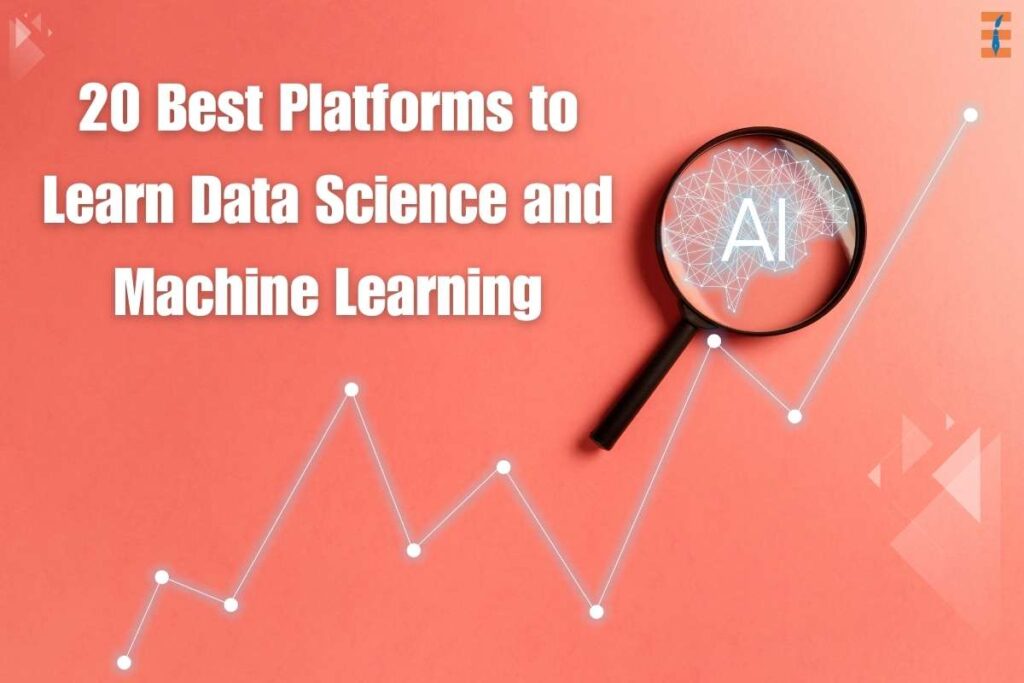Education has always been a dynamic field, constantly evolving to meet the changing needs of students and society. In recent years, the integration of technology into classrooms has generated an abundance of data that holds immense potential for improving teaching practices and student learning. Big data, characterized by its volume, velocity, and variety, combined with advanced analytics techniques, has ushered in a new era of educational research and practice. This article will explore how big data and advanced analytics can be leveraged to assess and enhance teaching practices
Table of Contents
Here are 7 ways of big data and advanced analytics to improve teaching practices:
Before delving into the role of big data and advanced analytics in education, it’s essential to understand the diverse sources of data generated within educational settings.
Data Sources in Education
1. Administrative Data

This includes student enrollment records, attendance data, and demographic information. Administrative data are typically stored in school or district databases and are used for tracking student progress and allocating resources.
2. Assessment Data
These data encompass the results of standardized tests, quizzes, and assignments. They provide insights into student performance, strengths, and areas requiring improvement.
3. Learning Management Systems (LMS)
LMS platforms, such as Moodle or Canvas, generate data on student engagement, participation, and progress within online courses. They track learners’ interactions with course materials and activities.
4. Educational Technology
Data from educational technology tools and platforms, including online textbooks, e-learning apps, and interactive simulations, can offer valuable insights into student behavior and learning patterns.
5. Surveys and Questionnaires
Educational institutions often administer surveys and questionnaires to gather feedback from students, parents, and educators. These surveys provide qualitative and quantitative data on various aspects of education.
6. Social Media and Online Forums
Educational discussions on social media and online forums generate user-generated content and discussions that can be analyzed to understand trends, challenges, and emerging topics in education.
7. Sensor Data
In some cases, sensors and wearable devices can collect data on student movements, interactions, and physiological responses, providing insights into their physical and emotional well-being.
The Role of Big Data in Education
Big data in education refers to the vast and complex datasets generated by various educational systems and technologies. These datasets offer a wealth of information that can be harnessed to gain a deeper understanding of educational processes and outcomes. The role of big data in education is multifaceted:
1. Predictive Analytics

Big data allows educators to predict student performance and behavior patterns. By analyzing historical data, such as grades, attendance, and engagement, predictive analytics can identify at-risk students who may need additional support.
2. Personalization
Big data enables personalized learning experiences. By tracking individual progress and preferences, educators can tailor instruction and resources to meet the specific needs of each student.
3. Curriculum Development
Educational institutions can use data to develop and refine curriculum materials, ensuring that they align with learning objectives and student needs.
4. Resource Allocation
Schools and districts can optimize resource allocation based on data analysis, directing funding and support to areas where they are most needed.
5. Performance Assessment
Big data allows for comprehensive performance assessment of educational programs, policies, and interventions. Schools can measure the impact of teaching practices and make data-driven decisions for improvement.
6. Research and Innovation
Researchers in education can leverage big data to conduct studies and experiments on a scale that was previously unimaginable. This enables the exploration of new pedagogical methods and the identification of best practices.
Advanced Analytics in Education
Advanced analytics techniques are essential for extracting meaningful insights from educational data. These techniques encompass a range of data analysis methods, including:
1. Descriptive Analytics
Descriptive analytics involves summarizing and visualizing data to provide an overview of educational trends and patterns. It includes techniques such as data visualization and summary statistics.
2. Predictive Analytics
Predictive analytics uses historical data to build models that can predict future events or trends. In education, this may involve predicting student performance, dropout rates, or course completion.
3. Prescriptive Analytics
Prescriptive analytics goes beyond prediction by recommending actions to achieve specific outcomes. In education, it can help identify interventions and strategies to support struggling students.
4. Machine Learning

Machine learning algorithms can identify complex patterns and relationships in educational data. This includes techniques like classification, clustering, and regression analysis.
5. Natural Language Processing (NLP)
NLP techniques analyze text data, such as student essays or forum discussions, to extract insights about language use, sentiment, and topic trends.
6. Social Network Analysis (SNA)
SNA examines the connections and interactions between students, teachers, and educational content. It can reveal information about social dynamics and collaborative learning patterns.
Assessing Teaching Practices with Data
Assessing teaching practices is a fundamental application of educational data analysis. It performs an important role in big data and advanced analytics. By analyzing data from various sources, educators and researchers can gain insights into the effectiveness of teaching methods, instructional materials, and classroom strategies. Here are some ways in which data can be used to assess teaching practices:
1. Evaluating Student Outcomes
Educational data can be used to assess student outcomes, such as test scores, grades, and course completion rates. By comparing outcomes across different teaching methods or instructors, educators can identify effective approaches.
2. Observational Data
Classroom observations, either in person or through video recordings, can provide valuable data on teacher-student interactions, instructional strategies, and classroom management. These observations can be used to assess teaching practices and provide feedback for improvement.
3. LMS and Online Activity Data
Learning Management Systems and online learning platforms generate data on student engagement and interactions with course materials. Analyzing this data can help assess the effectiveness of online teaching practices.
4. Feedback Surveys
Surveys administered to students can collect feedback on teaching practices, course content, and the learning experience. Analyzing survey data can highlight areas where improvements are needed.
5. Assessment Analytics
Assessment data, such as item analysis and student responses to quizzes and exams, can reveal the strengths and weaknesses of instructional materials and teaching methods.
6. Comparative Analysis
Comparative analysis involves comparing the performance of students in different classrooms or under different instructors. This can help identify teaching practices that lead to better learning outcomes.
Enhancing Teaching Practices with Data
The true value of educational data analysis lies in its ability to inform and enhance teaching practices. Here are some ways in which data can be used to improve instruction:
1. Identifying At-Risk Students
Predictive analytics can help identify students who are at risk of academic failure. Teachers can then provide targeted support and interventions to help these students succeed.
2. Personalized Learning
By analyzing individual student data, teachers can tailor instruction to meet each student’s specific needs. Adaptive learning platforms use data to adjust content and pacing in real time.
3. Feedback Loops
Continuous feedback loops, facilitated by data, allow teachers to adjust their teaching methods based on student responses and outcomes. This iterative process promotes ongoing improvement.
4. Curriculum Enhancement
Educational data can inform curriculum development and enhancement. By identifying areas where students struggle, educators can refine instructional materials and resources.
5. Professional Development
Data-driven insights can guide professional development for teachers. Educators can identify areas where they need additional training or support to improve their teaching practices.

20 Best Platforms to Learn Data Science and Machine Learning
Data science is exploding in practically every region of the planet. Data scientists are in great demand because they seem to have the “magical” capacity to generate value from data for data-driven businesses and organizations.
6. Innovation and Experimentation
Researchers and educators can use data to experiment with new teaching methods and innovations. These experiments can lead to the discovery of effective pedagogical approaches.
7. Policy and Decision Making
Educational leaders can use data to inform policy decisions and resource allocation. Data can highlight areas where investment is needed and where policies may need adjustment.
Challenges and Ethical Considerations
While the potential benefits of using big data and advanced analytics in education are significant, several challenges and ethical considerations must be addressed:
1. Data Privacy and Security
Safeguarding student data is paramount. Schools and institutions must implement robust data privacy and security measures to protect sensitive information.
2. Bias and Fairness
Data analysis can introduce bias, particularly when historical data reflects societal biases. Care must be taken to ensure fairness and equity in decision-making.
3. Interpreting Complex Data
Educational data can be complex and multifaceted. Interpretation requires expertise and careful consideration of context.
4. Teacher Autonomy
Teachers may be concerned about perceived loss of autonomy and increased surveillance when data is used for assessment and evaluation.
5. Resource Constraints
Some educational institutions may lack the resources, including staff with data analysis expertise, to effectively utilize big data and advanced analytics.
6. Ethical Data Use
The ethical use of data includes obtaining informed consent, protecting student anonymity, and ensuring that data is used for educational purposes rather than commercial gain.
Future Directions in Educational Data Analysis
The field of educational data analysis is continuously evolving. Here are some future directions and emerging trends:
1. Ethical Data Use Frameworks
The development of ethical frameworks and guidelines for using educational data will become increasingly important. This will help ensure responsible data practices.
2. AI and Machine Learning in Education
The integration of artificial intelligence and machine learning into education will enable more personalized and adaptive learning experiences. It performs an important role in big data and advanced analytics.
3. Blockchain for Credentialing
Blockchain technology may be used to securely store and verify academic credentials, making the credentialing process more transparent and reliable.
4. Continuous Assessment
Continuous assessment and feedback mechanisms will become more prevalent, allowing for real-time adjustments to teaching practices.
5. Collaborative Data Initiatives
Collaborative data initiatives will allow educational institutions to pool resources and expertise for more comprehensive data analysis.
6. Learner Analytics
Learner analytics will focus on providing students with insights into their own learning patterns and strategies, empowering them to take greater control of their education.
7. Data-Driven Decision Making
Educational leaders will increasingly rely on data-driven decision-making processes to improve educational outcomes and resource allocation.
Conclusion
The era of big data and advanced analytics has ushered in a new age of possibilities in education. By harnessing the power of data, educators and researchers can gain insights into teaching practices that were previously elusive. This data-driven approach has the potential to revolutionize education, making it more personalized, effective, and equitable.
However, as we navigate this data-rich landscape, it is essential to remain mindful of ethical considerations and privacy concerns. Ensuring that data is used responsibly and in the best interests of students is paramount.
In conclusion, the integration of big data and advanced analytics into education represents a transformative force that has the potential to enhance teaching practices and ultimately improve the educational experiences and outcomes of students. It is an exciting journey into the future of education, where data-driven insights illuminate the path to excellence in teaching and learning.










